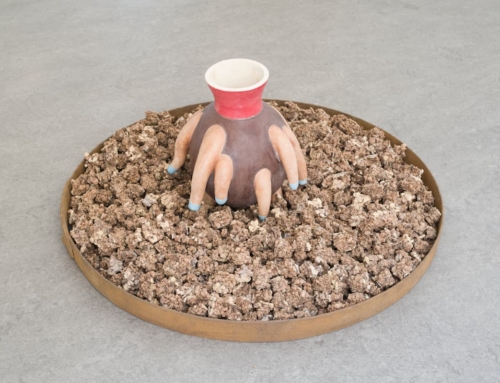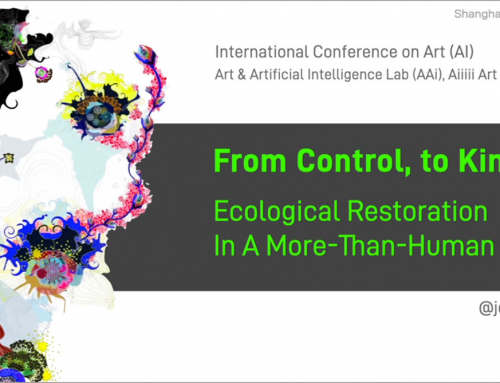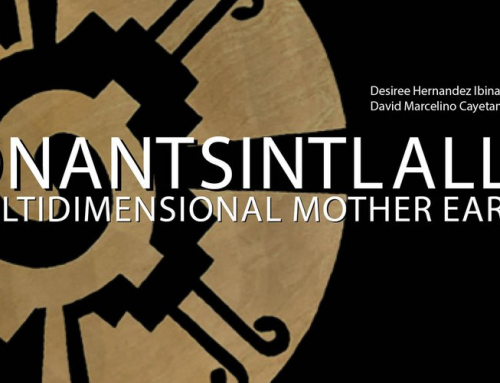What would architects design, if they did not design buildings? What would designers design, if they did not design products, or posters?
My question is not a rhetorical one. On the contrary, I believe design schools are in danger of being marginalised by events. The world is changing around them fast – and they are not. Or not fast enough. I agree with Al Gore that the world has reached a tipping point in its responses to climate change, resource depletion, and economic crisis: Changes we have all talked about for years are starting to beimplemented.
But design schools are finding it hard to move on from the old paradigm of design-for-production, and design for individual expression.
Last year, a new product was launched somewhere in the world every three minutes. Most of these products involved the inefficient use of energy, water, and natural resources. Each product thereby contributed to the 70 million tonnes of C02 that is emitted into the earth’s atmosphere, every 24 hours, as a result of human activity
Most of these products, and the emissions that accompanied them, involved input from the creative industries. Creative designers developed concepts, designed artefacts, and dreamed up a wide range of communications, packaging, and retail environments. All these ideas, images, symbols, and forms – and especially the $400 billion spent on advertising and marketing – had as their outcome unsustainable consumption.
Many students and young designers are looking for a new direction. But in most design schools I visit, they are still being encouraged to design a poster about sustainability, or to design a thought-provoking“eco bag”. But emitting messages, however clever or evocative they may be, is not the same as helping real people, in real places, change an aspect of their everyday material reality. The transition to sustainability is no longer about messages, it’s about activity.
Some multinational companies moved on from awareness-raising seven years ago or more. Today, they are moving faster on practical measures to mitigate climate change than most governments – and most design schools. Patrick Cescau , for example, until recently Group Chief Executive of Unilever, committed his company to the application of “new design principles” that would “progressively drive down its usage of resources and move towards ever more sustainable consumption. They are in themarket for sustainable design principles. So, too, is a growing number of cities and city-regions.
Waste becomes visible – and measurable
One reason big companies are moving fast is that their operations have become more transparent. The
waste generated in a consumer economy (a new product every three minutes) used to be hidden. The
energy and resources needed to produce buildings and products remained out of sight and out of mind.
But three new tools have increased transparancy: a framework called industrial ecology; a
measurement system called Materials Flow Analysis [MFA) or Life Cycle Analysis; and a concept called
embodied energy.
These three innovations have enabled researchers to measure energy and resource flows properly for
the first time. The scale of resource waste in our consumer economy is no longer hidden. Researchers
recently found, for example, that although a mobile phone weighs only 200 grams in your hand, the total
ecoogical footprint of a mobile phone adds up to 75 kilos per phone per year. That’s the resources
needed to mine the heavy metals in it, manufacture it, fabricate its computer chip, make and build the
relay masts, manufacture the packaging, build and run the shops, and so on. Nokia, on its own, sells a
million of the things a day. Other manufacturers probably equal that number. That’s 150 million
kilogrammes of environmental impacts added per day, just from something small and innocuous like a
mobile phone.
http://sedac.ciesin.org/openmeeting/downloads/1004554152_presentation_federico_tel_mips2.pdf
If the material impacts of something small like a mobile phone are that huge, think what the equivalent
numbers are for “green” – but physically heavy – products. Think of the mass in a green car, for
example; or in the turbines used in wind power. Those things weigh 25,000 kilos per unit upwards – just
fot eh ,mechanism. Add in the towers and the cables and the sub—stations and the impact of this
“green:” infrastructure is immense.
Industrial artefacts don’t even have to be heavy, to have a big footprint. The manufacture of a single
sheet of A4 paper, as used in your and my laserpinter, requires ten litres of water. Not for the whole
packet, for one single sheet.
This is jnot to argue against the design and production of stuff as such – just that we can no longer carry
omn desigjning and producing stuff mindless of the consequences. Design education, and the design
industry it feeds, therefore confront a huge dilemma. If they are not seen to be searching for alternatives
to product proliferation, then they will be blamed as a major cause of the problems we all face.
Climate change and multiple ‘peaks’ – peak oil, peak energy, peak debt – change everything. Within a
system whose carrying capacity is finite, the optimal strategy is to design away the need for more stuff
– and to focus on regenerative design is that creates conditions for life.
A Three Step Plan
“Far less stuff” does not mean less design. On the contrary: a huge amount of creativity is needed to
reorganise daily life in ways that eliminate landfill and ecocidal footprints. But the stuff we will still make
– products, services, infrastructures – must be designed according to tough new principles: low-carbon,
resource-efficient, and zero waste.
The transition to sustainability entails the re-localisation of most production and consumption. Some
globally available tools, some foods, and a lot of knowledge, will be still be globally exchanged. But the
focus for design schools should be existing grassroots and regional activity where their contribution can
be to create frameworks that enable these actions to grow and develop.
But how to start?
Step One: Map assets
A first step for any design school should be to find out what assets and resources are already there, in
their territory. These assets can be hard or soft: natural assets – such as wind, or sun, with the potential
to generate energy; materials, and the skills needed to use them; abandoned spaces with the potential
to be re-purposed; food systems.
The asset maps will gradually replace many of the maps used by planners or economists. These tend to
focus on hard things, such as roads or buildings. Sustainability asset maps should make natural and
biodiversity assets their starting point – with special emphasis on biodiversity and bioregions, foodsheds
and watersheds, or geographical locations where sun and wind can be exploited.
In mapping such assets, it is important to represent the interconnectedness and interdependence of
systems. This is where creative design skills will be valuable. New forms of representation are needed
to communicate energy and nutrient cycles, or biodiversity – and to show the different ways that healthy
social systems depend upon, and are intertwined with, healthy economies and ecosystems.
The human assets of meighbourhoods and communities – people – need to be mapped too – especially
those who are engaged in valuable but sometimes invisible innovation at a grassroots level.
Step Two: Connect locally
The identification of individuals and groups with positive energy and ambition leads to Step Two:
connecting with local activity.
When I was asked recently by the management consulting firm McKinsey to explain where the world’s
primary centers of innovation will be, my answer was simple: down your street, and down everyone’s
street! Social innovation is all around us. By some accounts, there are one million grassroots
environmental organisations out there. The better-known examples have names like Post-carbon Cities
or Transition Towns. Such groups – and others with different names, or no label at all – are emerging
fast in many parts of the world. The website WiserEarth lists 120,000 of them al over the world.
Go and find the ones in your region. Offer your school’s design skills and communication in a respectful
way. Assume that they will be the co-authors of any new solutions that emerge.
Most elements of a sustainable world aready exist. Some of these elements are technological solutions.
Some are to be found in the natural world, thanks to millions of years of natural evolution. But the
majority of solutions are social practices, some of them very old ones, that have evolved in other
societies and in other times. From this insight flows the proposition that designers should become
hunter-gatherers of models, processes, and ways of living that may already exist – sometimes quite
near by. Rather than design new services and systems from scratch, we need to ask: who has cracked
a similar question in the past? How might we learn from, adapt, and piggyback on their success?
This was the approach we took with Designs of the time (Dott 07) in North East England (where I was
programme director). Dott 07 was a programme of community projects and events developed with
people from the region, that engaged practically with two questions: ‘what might life in a sustainable
world be like?’ and, ‘how can design help us get there?’
The challenge was to frame these questions in such a way that local communities could take the lead
and identify answers that best fitted with their needs – in particular, the need radically to reduce the
consumption of energy and material resources in meeting daily life needs.
Our role was to discover and accelerate this existing grassroots innovation, not to create it from scratch.
Our focus was on bringing in additional design skills, technology platforms and resources, as and when
they were needed. We learned in Dott 07 that connecting people to new people, and helping them learn
from each other’s other experience, is itself a form of innovation. Dott innovated a number of event
formats, such as Project Clinics and Explorers Clubs, to bring project leaders from diverse backgrounds
together. People gained tremendous energy and insight from these exchanges experiences – but once
again, the designed formats we developed were not especially complicated.
The four key success factors in Dott, we now conclude, were first, to pose meaningful questions in a
real context; second, to identify project leaders from that context as partners and co-designers in the
project; third, to connect them with new partners and actors that they might not otherwise have met; and
fourth, to communicate the lives and times of these projects effectively using non specialist journalists to
do so.
These lessons also informed City Eco Lab, the “nomadic market” of projects from St Etienne region that
we produced for the Design Biennale there in 2008. We gathered together real-life projects to do with
food, mobility, water, and other aspects of daily life. For each project, we explained the ways that design
might help the project improve, or grow.
The approach I advocate to design schools is this: Don’t start a new organisation. Find a well-organised
project with good local roots, and join that one. Offer them your scavenger-innovator design skills. Help
them become expert and choosing between the multiple solutions on offer, or that can be found –
including adjacent organisations.
Step Three: Use new language
We all struggle with the word “sustainability”. There is no agreement on what the word means and
besides, it sounds boring and unattractive as a destination to head for. The word “eco-design” has a
more precise meaning – but ony for professionals.
Like “sustainability”, the word “design” is often a barrier to conversation with civilians: it tends to be
associated with chairs, cars, frocks, and narcissistic individuals. The word design triggers more negative
reactions than positive ones.
So let’s use some new words! My personal favourites right now are “green economy” or “green collar
jobs”. This is because I recently met their inventor, Van Jones, the American founder of Green For All. I
like his use of “green collar jobs” and the “green economy” becauuse they connect with what people are
thinking about – jobs – rather than what we would like them to be thinking about – sustainability, or
design!
And the focus on work, and jobs, also shifts the focus away from technology-based solutions towards
what Ezio Manzini calls enabling solutions.
Doors of Perception
I have described three steps that I believe will enable design schools to adjust to the accelerating
changes that are now underway: map the assets of your region; connect locally in live projects; and use
new language.
In my opinion, these three steps are not so hard to take. But I do recognise that institutions, like oil
tankers, tend to change very slowly. I therefore conclude this short paper with the scenario of a fourth
step: a partnership with Doors of Perception with the objective of supporting change.
Doors first explored the links between sustainability, design and innovation in 1994, at our conference
Doors 2 on “Info-Eco”. Ever since that inspiring week in Amsterdam, Doors has organised events, and
developed projects, in which designers, students and grassroots innovators explore two questions:
“what might life in a sustainable world be like?”; and, “what design steps are needed to get us from
here, to there?”.
Our idea has always been to co-design, with citizens and communities, lighter ways to organise daily
life. Our ambition is is that when any of these small design steps succeed, even in part, others can
quickly adapt them for their own situations – and multiply them on a larger scale.
In projects like Doors 9 on Food in India; or Dott 07 in England; or City Eco Lab in France: our focus has
moved away from set-piece conferences, which is how Doors began, to the organisation of events and
encounters that help designers – and design schools – practice the steps I have described here:
mapping the assets of a region; connecting locally in live projects. We believe that learning from other
people’s experience is itself a valuable form of innovation.
Our new focus is to connect the theme of green collar jobs, and the green economy, with design
actions to enable social enterprise. Increasingly, we encourage our project partners to prepare the
business plans of start-up or social enterprise at an early stage. These emergent business plans
function as attractors for future funding or investment. We also produce “Dragons Den” style
events. and “First Tuesday” style marketplaces, to bring business plans and funders and investors
together.
We do these activities with design and architecture schools, not for them. As a small organisation,
our aim is to complement the work of large tnetworks such as Cumulus. In practical terms, we ask
design schools to think of Doors as, say, half a faculty member – and budget accordingly.




